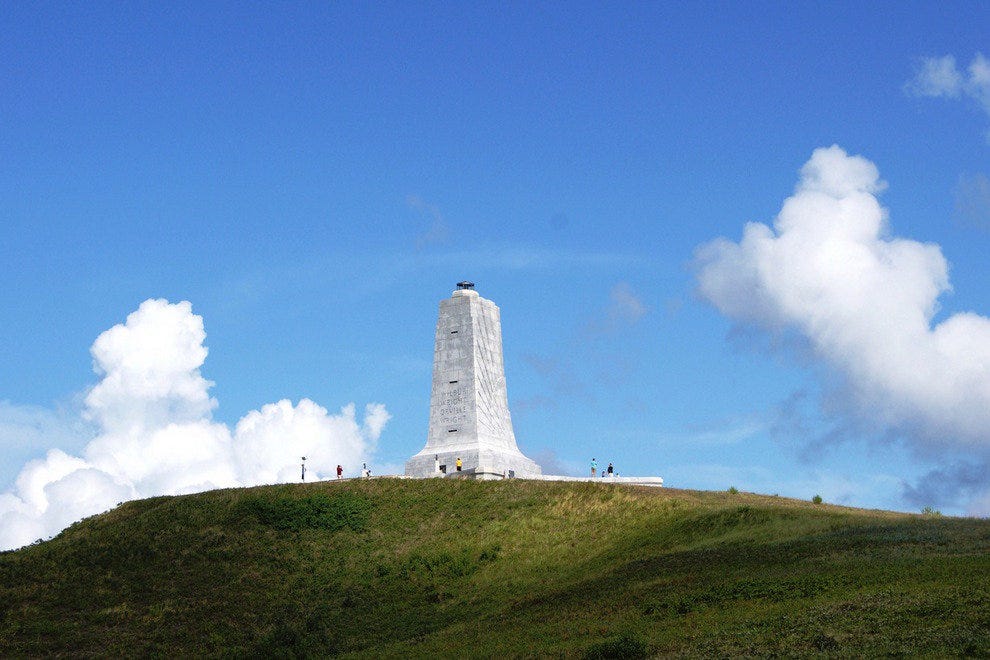Products You May Like
Photo courtesy of iStock / jssuley
These national park properties played witness to some of the biggest moments in U.S. history
Note from 10Best: Someday, we’ll all be ready to pack our suitcases again and head out on our next adventures. In the meantime, here’s some inspiration for the future.
We all know national parks are famous for their natural beauty and abundant wildlife, but many of the properties managed by the National Park Service are of great historic importance as well.
With the help of the National Park Foundation, 10Best has come up with 10 national parks that will allow you to brush up on your history and deepen your understanding and appreciation of America the beautiful.
Belmont-Paul Women’s Equality National Monument – Washington, D.C.
President Barack Obama designated this a national monument on April 12, 2016, making it only the second national monument to specifically commemorate women’s history. For 90 years, the National Woman’s Party made this house, in the shadow of the U.S. Capitol, its headquarters.
It was from here that Alice Paul and the other members of the organization helped secure passage of the 19th amendment, granting women the right to vote.
 Photo courtesy of iStock / tomorrowspix
Photo courtesy of iStock / tomorrowspix
Brown v. Board of Education National Historic Site – Kansas
The pivotal Brown v. Board of Education court case ended segregation in public schools, ensuring a more equitable future for generations to come. While the Supreme Court decision considered five cases from five different states, the national monument in Topeka, Kansas occupies the grounds of former Monroe Elementary School, the school that plaintiff Oliver Brown’s daughter attended.

César E. Chávez National Monument – California
César E. Chávez, one of the most important Latino leaders and civil rights activists of the 20th century, helped establish the nation’s first permanent agricultural union to help ensure farm workers received higher wages and safer working and living conditions. The monument occupies the former headquarters of the movement Chávez helped create.
 Photo courtesy of NPS/Brenda Schwartz
Photo courtesy of NPS/Brenda Schwartz
Flight 93 National Memorial – Pennsylvania
On a Tuesday morning in 2001, four commercial airplanes were hijacked in an attack that would cost more than 3,000 Americans their lives. The brave actions of 40 passengers and crew aboard Flight 93 thwarted an attack on the U.S. Capitol.
Golden Spike National Historical Park – Utah
Golden Spike National Historical Park sits at the spot where the Union and Central Pacific Railroads joined their tracks. It completed the first Transcontinental Railroad, forever influencing the growth of the United States.
 Photo courtesy of NPS Photo
Photo courtesy of NPS Photo
Little Rock Central High School National Historic Site – Arkansas
After the Supreme Court decision Brown v. Board of Education in May of 1954, nine African-American students began attending classes at the previously all-white Little Rock Central High School, sparking the first fundamental test of the historic desegregation decision.
 Photo courtesy of iStock / Woodkern
Photo courtesy of iStock / Woodkern
Manzanar National Historic Site – California
In 1942, some 110,000 men, women and children were removed from their homes by the U.S. government and detained in military-like camps in remote areas of the country. The Manzanar War Relocation Center was one of 10 such internment camps for Japanese Americans and resident Japanese aliens during World War II. It’s important for us to remember this darker period in U.S. history, lest we repeat it.
 Photo courtesy of iStock / stevegeer
Photo courtesy of iStock / stevegeer
Pullman National Monument – Illinois
Pullman National Monument occupies the grounds of what was once the first planned, model industrial complex and community. It was also the site of a violent strike in Chicago in 1894 that at once demonstrated the power of national labor and led to this national strike being declared illegal.
 Photo courtesy of Tami A. Heilemann / U.S. Department of the Interior
Photo courtesy of Tami A. Heilemann / U.S. Department of the Interior
Tuskegee Airmen National Historic Site – Alabama
In 1940, US Army Air Corps (Army Air Forces) brought in African-American men and women to be trained to fly military aircraft or work in ground operations. The experiences of these Tuskegee Airmen opened doors and paved the way for greater opportunities for African-Americans.
 Photo courtesy of NPS Photo
Photo courtesy of NPS Photo
Wright Brothers National Memorial – North Carolina
Modern-day travelers owe thanks to Wilbur and Orville Wright, who spent four years experimenting before they made the world’s first successful airplane flight in 1903. This pair of self-taught engineers changed what it means to travel.



